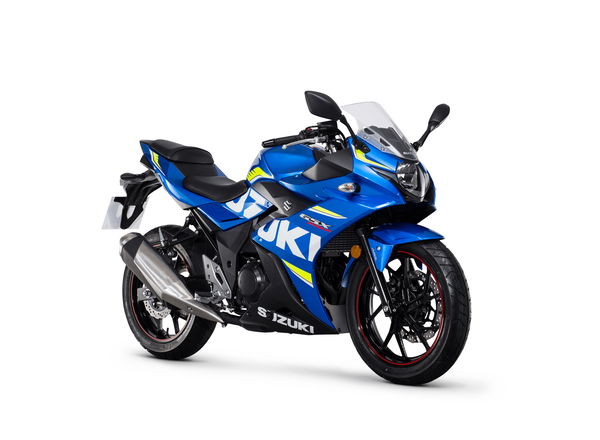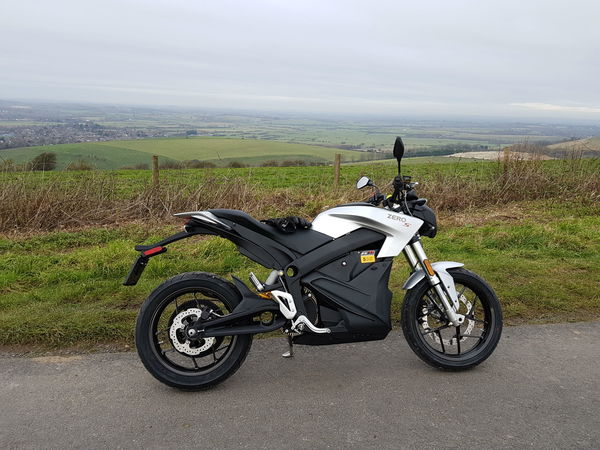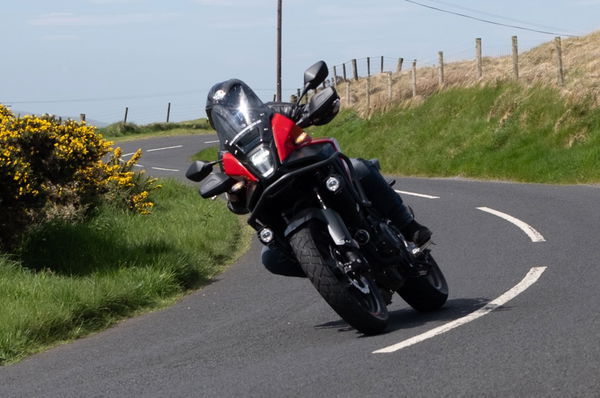First ride: Suzuki GSX250R review
Does Suzuki's sporty 250 have the GSX-R pedigree?

SUZUKI was a little late to the 250cc sports bike party when it revealed the GSX250R at EICMA 2016.
This model brought a low-capacity option to the Japanese brand’s sporty range – the first such example in two decades.
But would the GSX250R share the thrilling performance and refined handling of its 600cc, 750cc and 1000cc namesakes?
Before Christmas, I put on my A2 boots and collected a test model from Suzuki to find out.
It didn’t go well. Shortly after leaving Suzuki’s base in Milton Keynes the low beam bulb went, leaving me riding blind along a dark B-road. The bike had covered just 700 miles since new, and Suzuki had prepped it prior to collection.
I high-beamed it home, receiving numerous flashes from approaching cars.
However, that was only the start of my ‘lightmare’. 200 miles and a week later the high beam failed as I rode down a pitch-black A3 on the way to get the low beam fixed. Unable to see more than two metres ahead, I resorted to sticking on my hazards and tailgating a car to the nearest services…

After a man with a van collected me from Liphook services, I took the GSX250R to Haslemere Motorcycles, where a friendly mechanic diagnosed the problem: both elements in the H4 bulb had gone.
However, there was a myriad of potential reasons why, including vibrations, a faulty bulb or an issue with the regulator rectifier.
As he got to work replacing the bulb, the bulb-retaining clip slipped out due to too small a washer holding it in place. A half an hour fix became a near three-hour job, as the whole front faring of the bike would have to be removed to replace this clip.
The eventual diagnosis was as vague as the first. The regulator rectifier was performing correctly and the battery was fully charged and behaving as it should be.
In short, there was no obvious fault. It may just have been bad luck, but a little part of me was left pondering the design and quality of the Chinese built bike.
Engine:
Three months prior to collecting the GSX250R, I rode the GSX-R125 and GSX-S125 at launch. Both models boast a host of class-leading specs in their respective sectors, including best power-to-weight ratio and best acceleration. I was seriously impressed.
While admittedly there is more than six months between production of the 125cc and 250cc models, I approached the GSX250R expecting similar performance, and was unsurprisingly disappointed
The 250 features Suzuki’s 248cc parallel twin – aka the GW250/Inazuma 250 unit. Suzuki claim that for the GSX250R this powertrain has ‘undergone thorough analysis and optimisation to maximise low-to mid-range torque’, which includes a new camshaft and a new intake valve design. It still makes the same 24.7hp at 8,000rpm and 17.3lb/ft torque at 6,500rpm and while there’s enough torque lower down the range, anything north of 6,000rpm felt flat. In fact, you have to wring the engine long before the 10,500rpm redline in order to reach the bike’s top speed.
However, this low torque makes the model excellent for comfortable inner city commuting. You’ll still be among the first away from the red light and the light handling combined with the sporty stance makes it ideal to slip through traffic.
On motorways, the 250 is no match for a larger capacity sportsbike, but it doesn’t do too badly, either. It may take you a while to reach fast cruising speeds but can reach 60mph without too much stress.

Handling:
Handling is where the GSX250R excels – especially at low to mid speeds. It’s got everything you’d want from a small-capacity sports bike: light steering, sporty clip-ons which aren’t uncomfortably low and a relatively pleasant rider triangle (at least for this 5ft7 rider). The seat is quite hard, but that’s not a deal-breaker.
Suzuki call it ‘the everyday sportsbike’ and if everyday means inner-city commuting, then that is spot on. Its light steering and low end torque makes for excellent usability in town, and while it has quite a high kerb weight of 181kg (the 2011 Honda CBR250R ABS weighed 166kg wet, while the 2008 Kawasaki Ninja 250R weighed 170kg), it’s still fairly easy to manoeuvre at a halt.
At higher speeds, handling becomes somewhat more vague, and less refined than in the city.
Suspension:
Telescopic, oil damped, coil spring features up front, while a swingarm mounted, oil damped coil spring can be found at the rear. Both KYB units are adequate for the bike’s low power, but as with any sportsbike you should avoid seriously bumpy roads.
Brakes:
The GSX250R’s front and rear disc brakes are good across a range of speeds. The standard ABS system, however, seemed a little too sensitive and interfering on a couple of occasions. It activated as I braked gently while filtering on dry white lines, and the ABS seemed to completely deactivate the brakes. On other occasions, the lever pushed back on my hand as it kicked in – quite a disconcerting feeling.
Equipment:
The GSX250R doesn’t come dripping in tech – in fact it has less gadgets than the 125cc (i.e. a theft-protection device on the ignition).
The £3999 GSX-R125 gets Dunlop D102 tyres so why on earth did Suzuki fit IRC RX-01 Road Winners to the GSX250R?
The reverse-lit LCD instrument cluster looks good, as do the MotoGP farings. However, a bolt obscures the first ‘U’ of Suzuki on the bellypan, which seems a bit amiss by the designers.
We like:
The MotoGP colour scheme is always a winner, even on Suzuki’s small capacity bikes.
We don't like:
Honda has been producing the CBR250R since 2011, whereas Kawasaki has been building its Ninja 250 since 1986, with the last (300cc) generation launching in 2013. What took Suzuki so long?
Verdict:
‘Everybody’s got to learn sometime,’ crooned The Korgis almost four decades ago.
But I’m not sure that Suzuki’s GSX250R is that ‘sometime’ bike. It’s a shame as it has the potential to be good, combining low (but not L-plate low) power, easy steering and a sporty style.
However, the issues which plagued my test model left me with a bad taste in my mouth, and many wasted hours – one waiting for the bike to be recovered, and almost three in the dealership as the bulb was replaced.
Fingers crossed these issues were but a fluke and not a sign of poor build quality.
But ultimately, while I was blown away by the GSX-R125 at launch in September, the 250 left me feeling a little flat.
Specs:
Model tested: Suzuki GSX250R GP
Price: £4,399
Engine: 248cc parallel twin
Power: 24.7hp
Torque: 17.26lb.ft @ 6500rpm
Kerb weight: 181kg
Seat height: 790mm











